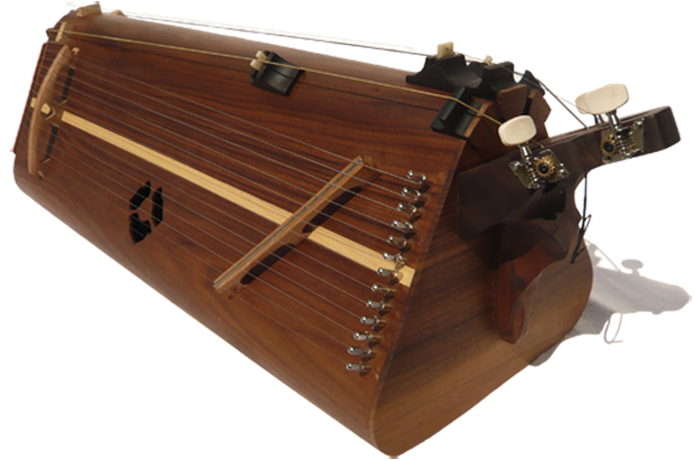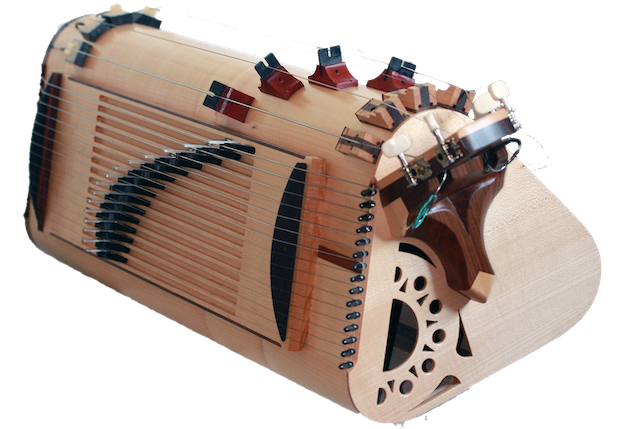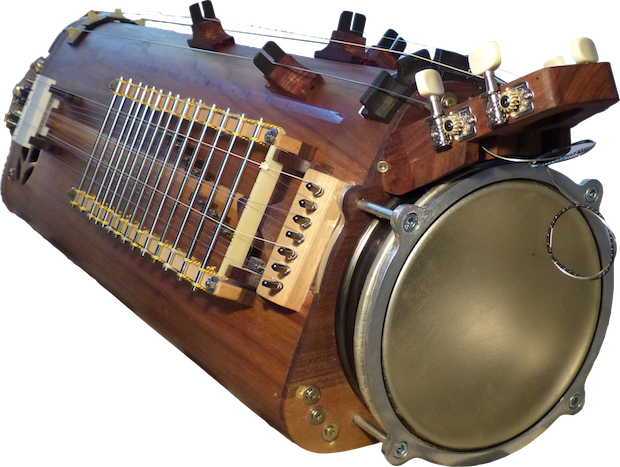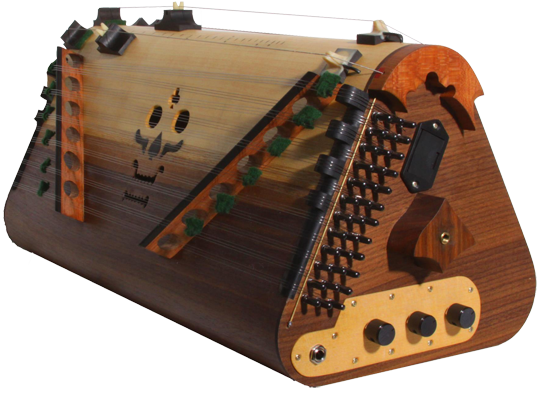The Mulatar, an instrument with many faces:
Origin:
The Mulatar is an innovation from Lockruf which was developed in the dawn of 2011 primarily via a combination of friendship, a love for instrument design and acoustic music of the world and a compulsion for experimentation.
The Mulatar is suitable for:
We've seen time and time again, that the Mulatar is an easily approachable instrument for beginners. Its flexibility allows playful experiments and each player finds their own way. This is a key concept and benefit of playing the Mulatar: there are no explicit techniques or ways of playing, which is sadly not the case with many music instruments. A guitar, for example has a widely recognised sound and playing style, and this is clear to all even before they pick one up. Consequently, often is the case that when these expectations aren't met, i.e. it doesn't sound as expected or the learner can't play it as intended, the learner soon loses interest. The Mulatar is different in the way that every sound combination has a positive effect on the learner, which also could lend itself to therapeutic purposes, music therapy for example.
Usage:
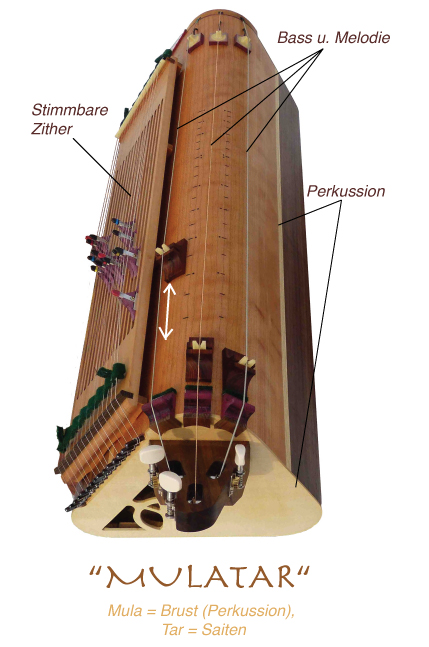 The Mulatar is a combination of string and percussion and can be plucked, bowed, struck, scraped and of course stroked. These various playing techniques creates a plethora of sounds and sonorities, when combined melt into one sonorous, full sound.
The Mulatar is a combination of string and percussion and can be plucked, bowed, struck, scraped and of course stroked. These various playing techniques creates a plethora of sounds and sonorities, when combined melt into one sonorous, full sound.
Usually the Mulatar is played on the lap or knee, but can also be played standing with a belt. Pitch modulation of the bass and melody strings occurs through sliding the moveable bridges along the upper curved corner of the instrument, which we like to call faders.
The mulatar is equipped with 3 separate amplification systems that cover the zither, bass elements and percussion. The strength of the 3 signals can be modified and blended with separate control knobs. Subsequently, the signals are sent through 2 outputs, where the player can decide which sources should go to which output. This is particularly useful when performing with effects and/or loop pedals. There are other electronic variations available and even more being currently researched.
Sabab
The term Sabab is a portmanteau of the words rabab and saz. The tuning and stringing is similar to that of a saz, whereas the wooden body and soundboard made from hide is more like a rabab. Like the majority of our instruments, we´ve built in an amplification system.
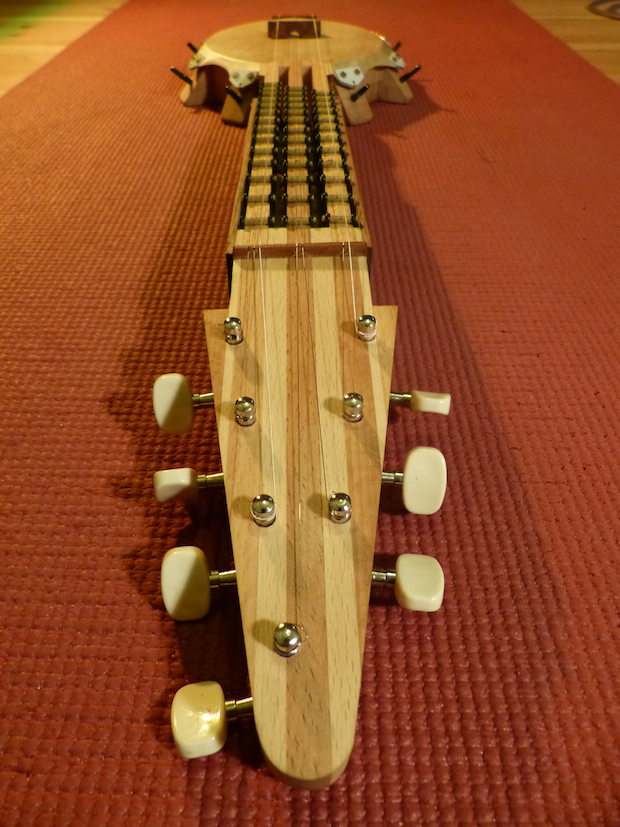
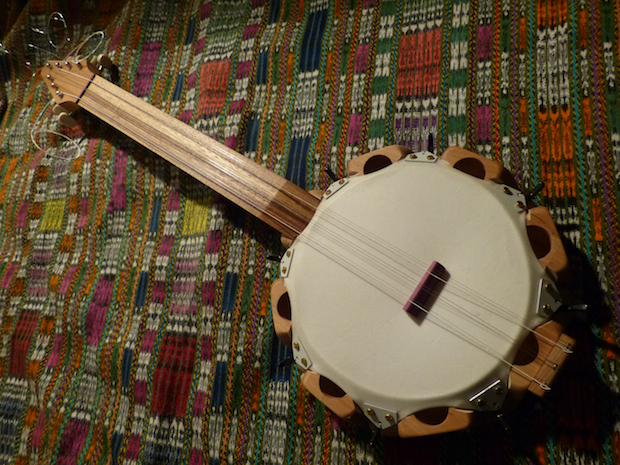
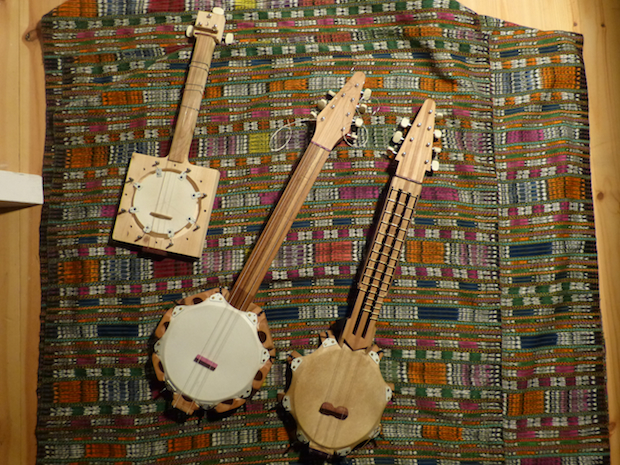
Tintar
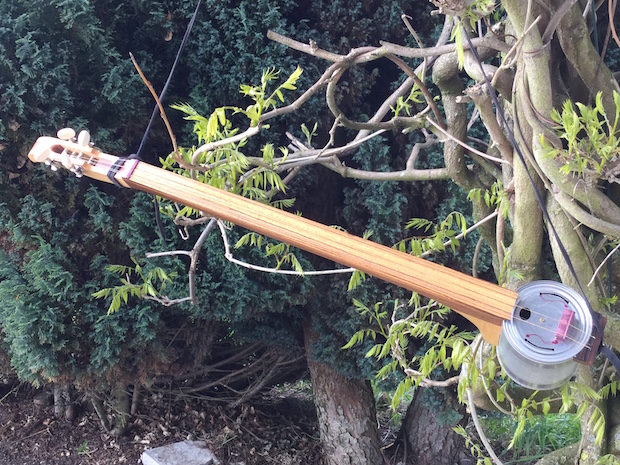
Die Tintar ist ein Saiteninstrument dessen Korpus aus einer Konservendose besteht.
Bestückt ist die Dose mit einem Hals und einem Saitenhalter, die beide mit dem Blech verschraubt sind. im inneren befindet sich eine Feder die mit der Decke und dem Boden gekoppelt ist. Sie ist für die Reise als ständiger Begleiter gebaut und kann in mannigfaltigen Ausführungen und Größen hergestellt werden. Es ist ein sehr robustes Instrument und sollte der Korpus einmal Schaden nehmen ist er leicht auszutauschen.
